Stains or puddles under the car should never be ignored. It always signifies some kind of leakage. Sometimes this is totally harmless or even a technical necessity. Nevertheless, most leakages are the result of a defect with possible annoying or even serious consequences. Read everything you need to know about puddles under the car in this article.
Fluids in your car
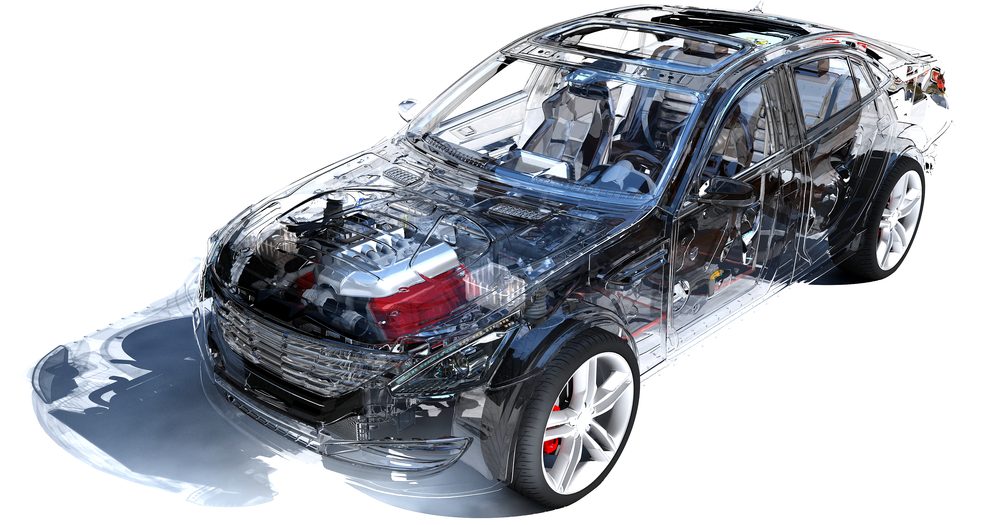 Several fluids circulate in a car, each one of them with specific characteristics and a clearly defined task. Only few of them are allowed to escape. Summing up all operating fluids in the car provides the following list:
Several fluids circulate in a car, each one of them with specific characteristics and a clearly defined task. Only few of them are allowed to escape. Summing up all operating fluids in the car provides the following list:
|
– fuels: petrol or diesel – lubricants: engine oil, gearbox oil, differential oil – brake fluid – coolant – condensation in the air conditioner – liquid refrigerant for the air conditioner – battery acid |
Step 1: Diagnosis of puddles under the car
The first step of identifying a defect is determining which fluid you are dealing with. This is simplified by the specific characteristics of the operating fluids:
|
|
|
|
|
|
|
|
|
|
|
|
|
Step 2: finding the leakage
Once you are certain what fluid you are dealing with, you can start looking for the leakage. There are three ways of going about this:
|
– searching on a dirty engine – searching on a clean engine – searching with fluorescent contrast fluid |
If you already know your way around your car with its typical weak points, you might start by checking the dirty engine. An experienced eye immediately spots leaking oil and other fluids. From a certain degree of pollution this might become more difficult. An older car could lose fluids at several points. With a dirty engine you run the risk of repairing one leakage and overlooking another one.
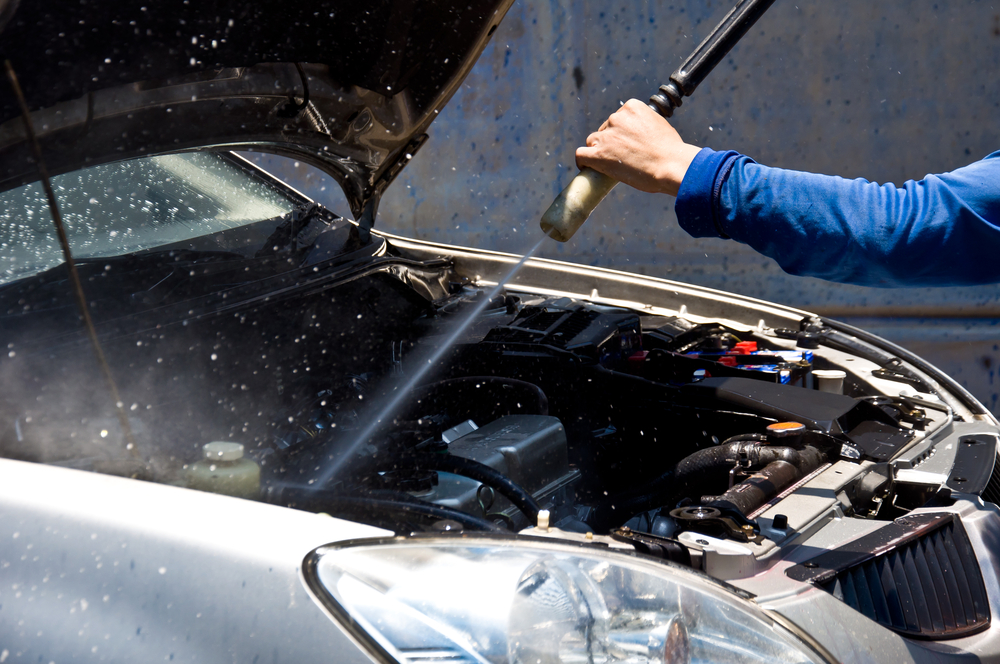 Therefore it make sense to thoroughly clean the engine prior to searching for a leakage. It is strongly recommended to work manually and professionally: brake cleaner, dish brush, rags, pressurised air are the best tools here. Use of a high-pressure washer is not recommended for engine cleaning. The strong water jet might cause water to penetrate the control unit and the ignition electronics, both causing defects.
Therefore it make sense to thoroughly clean the engine prior to searching for a leakage. It is strongly recommended to work manually and professionally: brake cleaner, dish brush, rags, pressurised air are the best tools here. Use of a high-pressure washer is not recommended for engine cleaning. The strong water jet might cause water to penetrate the control unit and the ignition electronics, both causing defects.
A ground-breaking method for cleaning the engine is dry-ice blasting. Instead of a fluid, the engine is cleaned with frozen CO2. With ca. 60 EUR (± £52) this method is rather expensive, although the result is fantastic: the engine looks as if it comes straight from the factory. This procedure is optimal for finding leakages.
Consider, that with 20 minutes this is the quickest way of cleaning the engine, leaving no residue.
After cleaning, let the engine run idle. Now, you should have no problem finding the leakage.
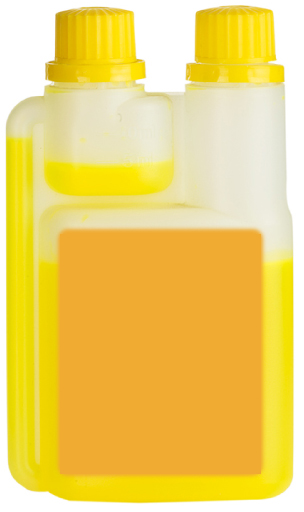 The safest method of finding the cause of leaking oil or coolant is the use of fluorescent contrast agent. Not only is this method very clever, but also very practical as well as very cheap. For a search with a contrast agent you need:
The safest method of finding the cause of leaking oil or coolant is the use of fluorescent contrast agent. Not only is this method very clever, but also very practical as well as very cheap. For a search with a contrast agent you need:
|
– contrast agent for oil (± £6.5) or coolant (± £5). – UV lamp (±£7). – darkness (night, an underground car park or a garage). |
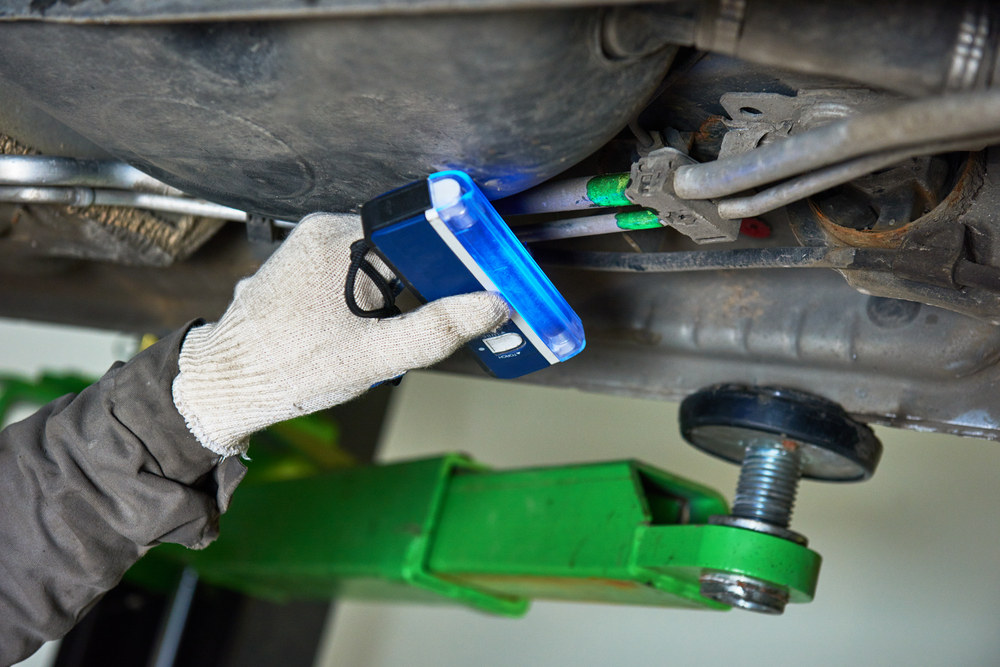 The contrast agent is simply poured into the oil filler opening or the expansion tank of the cooling system. Then, let the engine run for a few minutes. Now, light the engine compartment with the UV lamp, causing the leaking contrast agent to light up. The leakage is thus found quickly and undoubtedly.
The contrast agent is simply poured into the oil filler opening or the expansion tank of the cooling system. Then, let the engine run for a few minutes. Now, light the engine compartment with the UV lamp, causing the leaking contrast agent to light up. The leakage is thus found quickly and undoubtedly.
 TIP: If you are looking for leakages in the cooling system AND in the lubrication, do not simultaneously use both contrast agents. Working sequentially simplifies the identification of leakages.
TIP: If you are looking for leakages in the cooling system AND in the lubrication, do not simultaneously use both contrast agents. Working sequentially simplifies the identification of leakages.
Step 3: Repairing damages correctly
There is only one sound method of resolving a leakage in a car: its correct repair. Leaking hoses must be removed, replaced by new ones and not merely wrapped with tape. Leaking brake lines also must be removed and replaced.
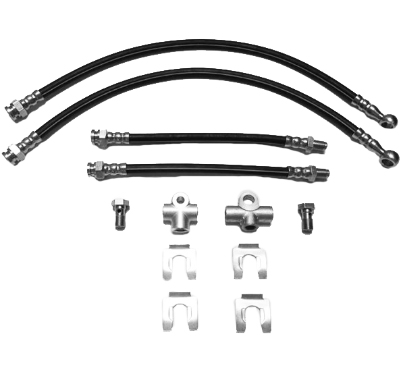
Front and rear brake hosesavailable up from £ 2,72Go to shop ⇒ |
A defective gasket between two components requires replacement by removal, cleaning and correct installation. This does not allow for any tinkering or quick solutions. We choose to emphasise this, as the market for miracle solutions in this field is huge. Therefore we very clearly state:
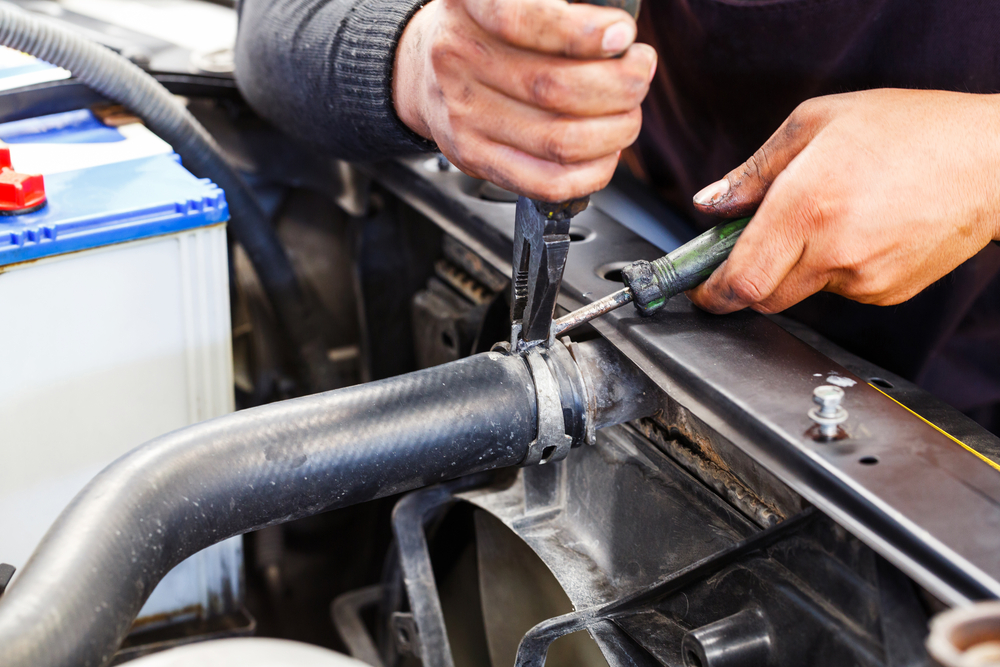 Keep away from “Radiator Stop Leak” or “Oil Stop Leak”. These agents are short-time solutions at best. Generally they only cause more damage. Radiator Stop Leak can block the thermostat or impair radiator performance. Oil Stop Leak might serve cosmetic purposes, though cannot replace a defective gasket.
Keep away from “Radiator Stop Leak” or “Oil Stop Leak”. These agents are short-time solutions at best. Generally they only cause more damage. Radiator Stop Leak can block the thermostat or impair radiator performance. Oil Stop Leak might serve cosmetic purposes, though cannot replace a defective gasket.
Brakes and fuel lines do not allow for any makeshift solutions at all. A leakage may be a nuisance, but it is what it is: an indication that your car urgently needs maintenance.
Step 4: Act sensibly when you see puddles under the car
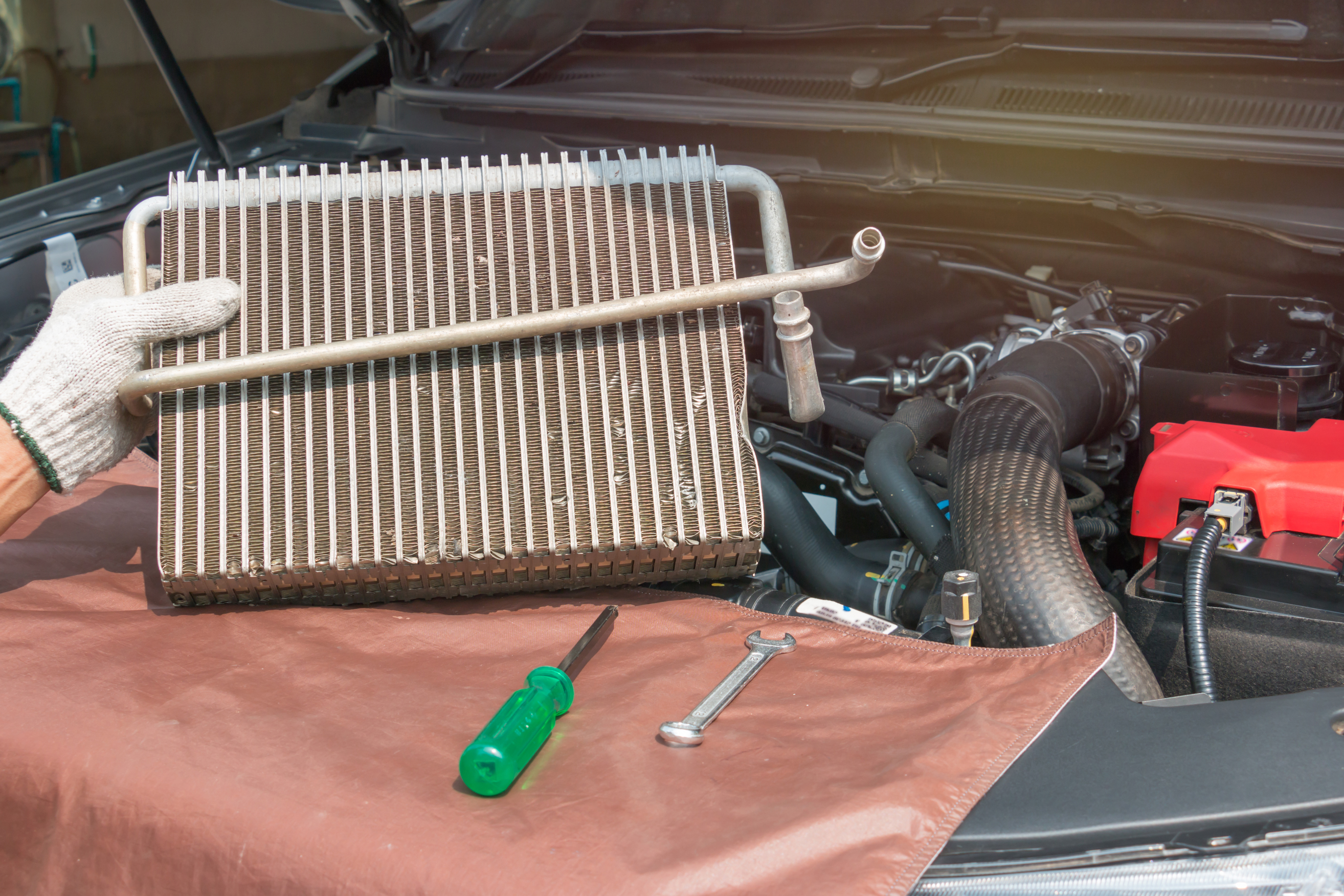 Leakages mainly occur in older cars which haven’t been inspected for a long time. There is only one option here: thoroughly checking the car and making a list of all necessary repairs.
Leakages mainly occur in older cars which haven’t been inspected for a long time. There is only one option here: thoroughly checking the car and making a list of all necessary repairs.
If the brake system is leaking, the brake fluid needs replacement. In this case, the expansion tank, brake discs, brake cylinders and linings should be checked as well. As the car is disassembled anyway, this is a perfect occasion for replacement of those parts.
The same applies to the radiator: if the car is old and its radiator hoses are porous, the radiator can hardly be expected to be in a good condition. Be wise and invest an extra £50 by repairing the entire cooling system, restoring a condition in this unit, ensuring long-term security.
Foto: Kzenon, iurii, Soonthorn Wongsaita, Love the wind, TigerStock’s, Differr, Romaset, MoonAngelEyes, Charles Knowles, buffaloboy2513, 7th Son Studio, Dmitry Kalinovsky / shutterstock.com


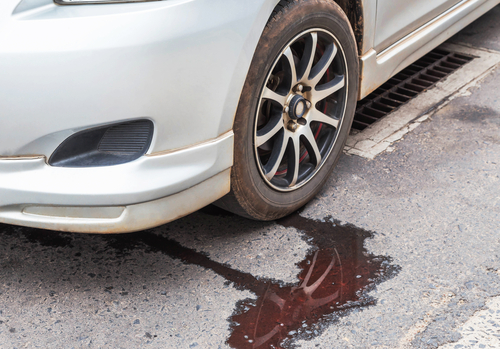 Diesel and petrol have a smell of their own. Diesel is a slightly oily, brownish substance. Petrol has a sharp smell and causes a specific rainbow-coloured shimmering when floating on water, e.g. a puddle.
Diesel and petrol have a smell of their own. Diesel is a slightly oily, brownish substance. Petrol has a sharp smell and causes a specific rainbow-coloured shimmering when floating on water, e.g. a puddle. Lubricants are brownish or black and very greasy. Leaking oil is therefore very easy to spot. Try rubbing some of it between index finger and thumb to determine its lubricating quality, preferably using the disposable gloves from the first aid kit. Do not forget to replace those afterwards as their absence might cause problems on occasion of a check. Furthermore disposable gloves are indispensable when giving first aid to an accident victim to avoid infections.
Lubricants are brownish or black and very greasy. Leaking oil is therefore very easy to spot. Try rubbing some of it between index finger and thumb to determine its lubricating quality, preferably using the disposable gloves from the first aid kit. Do not forget to replace those afterwards as their absence might cause problems on occasion of a check. Furthermore disposable gloves are indispensable when giving first aid to an accident victim to avoid infections.
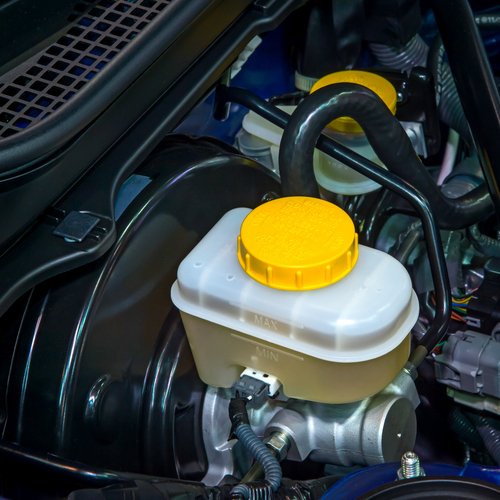 Brake fluid is an oily substance with a penetrating smell. It has a clear brown colour, turning greenish when it is older. It can be easily identified by the leakage location: a stain right next to one of the wheels is a clear indication of a leaking brake system.
Brake fluid is an oily substance with a penetrating smell. It has a clear brown colour, turning greenish when it is older. It can be easily identified by the leakage location: a stain right next to one of the wheels is a clear indication of a leaking brake system.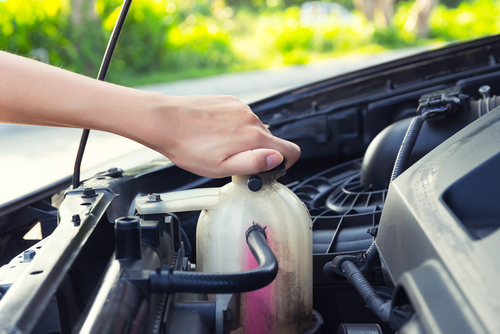 Coolants have a sweet smell, as the added antifreeze contains glycol. This watery substance has a marginal lubricating effect. Coolants often have a green hue, several types a blueish or reddish colour, depending on the added antifreeze agent.
Coolants have a sweet smell, as the added antifreeze contains glycol. This watery substance has a marginal lubricating effect. Coolants often have a green hue, several types a blueish or reddish colour, depending on the added antifreeze agent.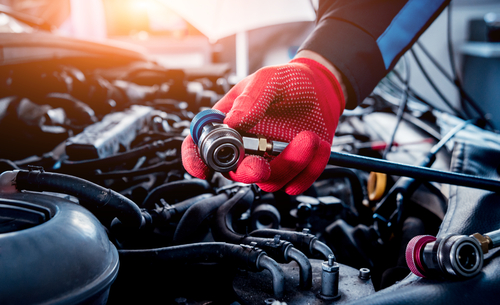 Condensation in the air conditioner is pure water and nothing else. It is the only fluid which is allowed to escape. It emerges as a result of the normal air conditioning function and its discharge is technically justified and no grounds for concern.
Condensation in the air conditioner is pure water and nothing else. It is the only fluid which is allowed to escape. It emerges as a result of the normal air conditioning function and its discharge is technically justified and no grounds for concern.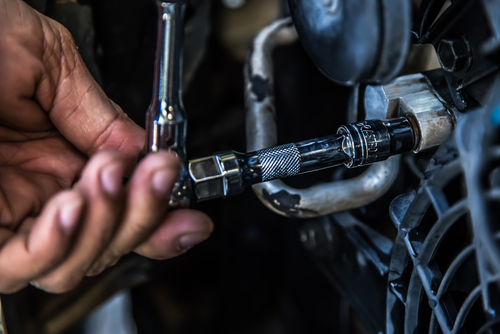 The liquid refrigerant in the air conditioner is liquid as long as it remains under pressure. A leaking air conditioner causes the refrigerant to escape in a gaseous state. There is no liquid residue. Stains or puddles under the car can therefore never be the result of a defective air conditioner.
The liquid refrigerant in the air conditioner is liquid as long as it remains under pressure. A leaking air conditioner causes the refrigerant to escape in a gaseous state. There is no liquid residue. Stains or puddles under the car can therefore never be the result of a defective air conditioner.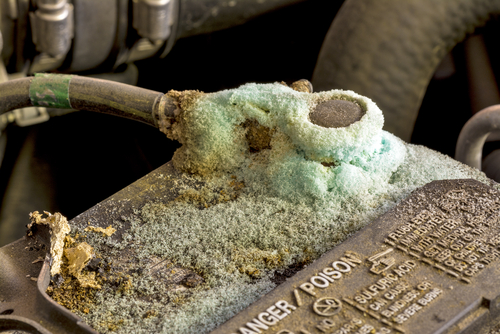 Battery acid hardly ever leaks. Generally, battery holders last longer than the battery`s operational life, meaning that
Battery acid hardly ever leaks. Generally, battery holders last longer than the battery`s operational life, meaning that 









